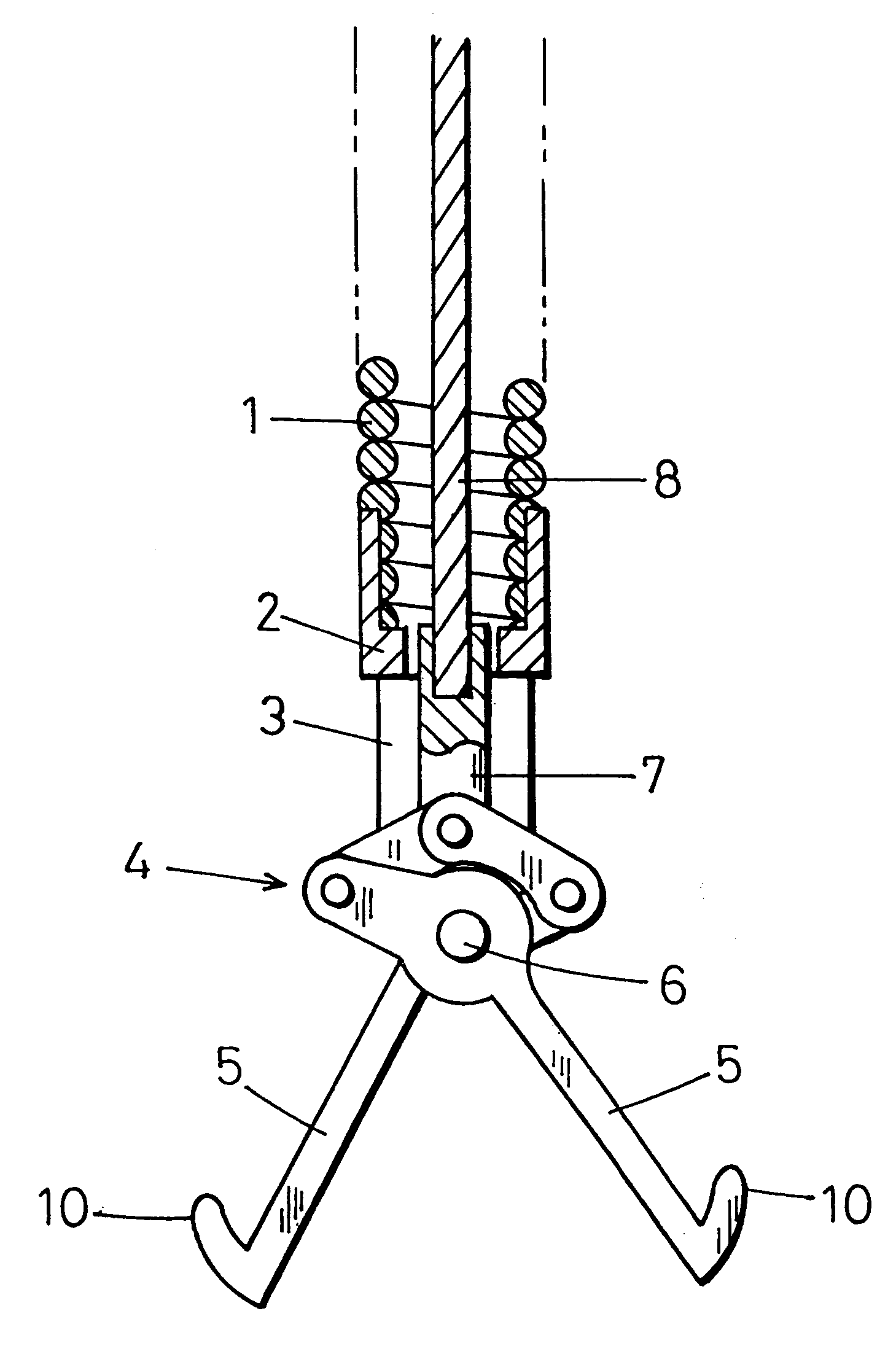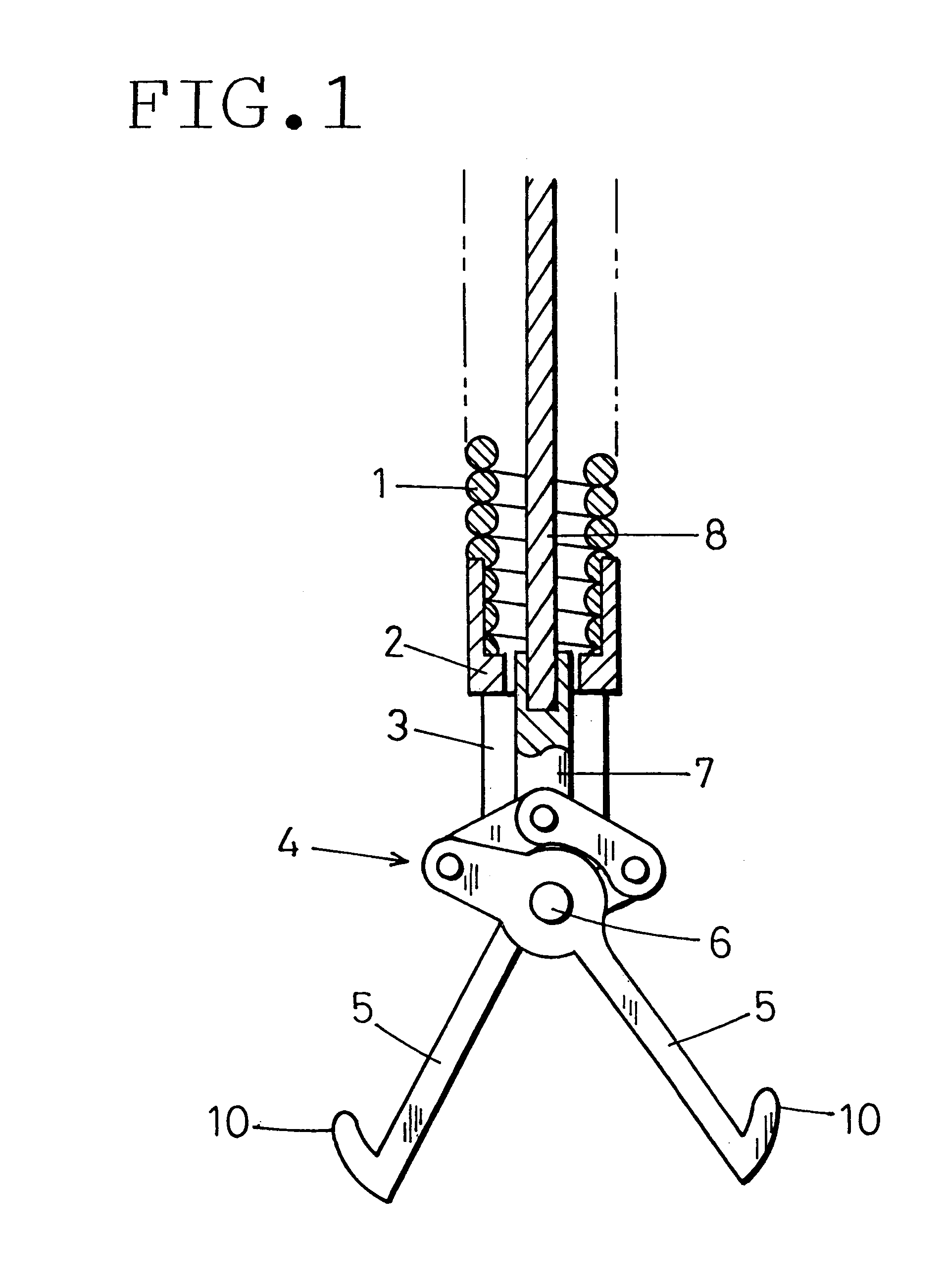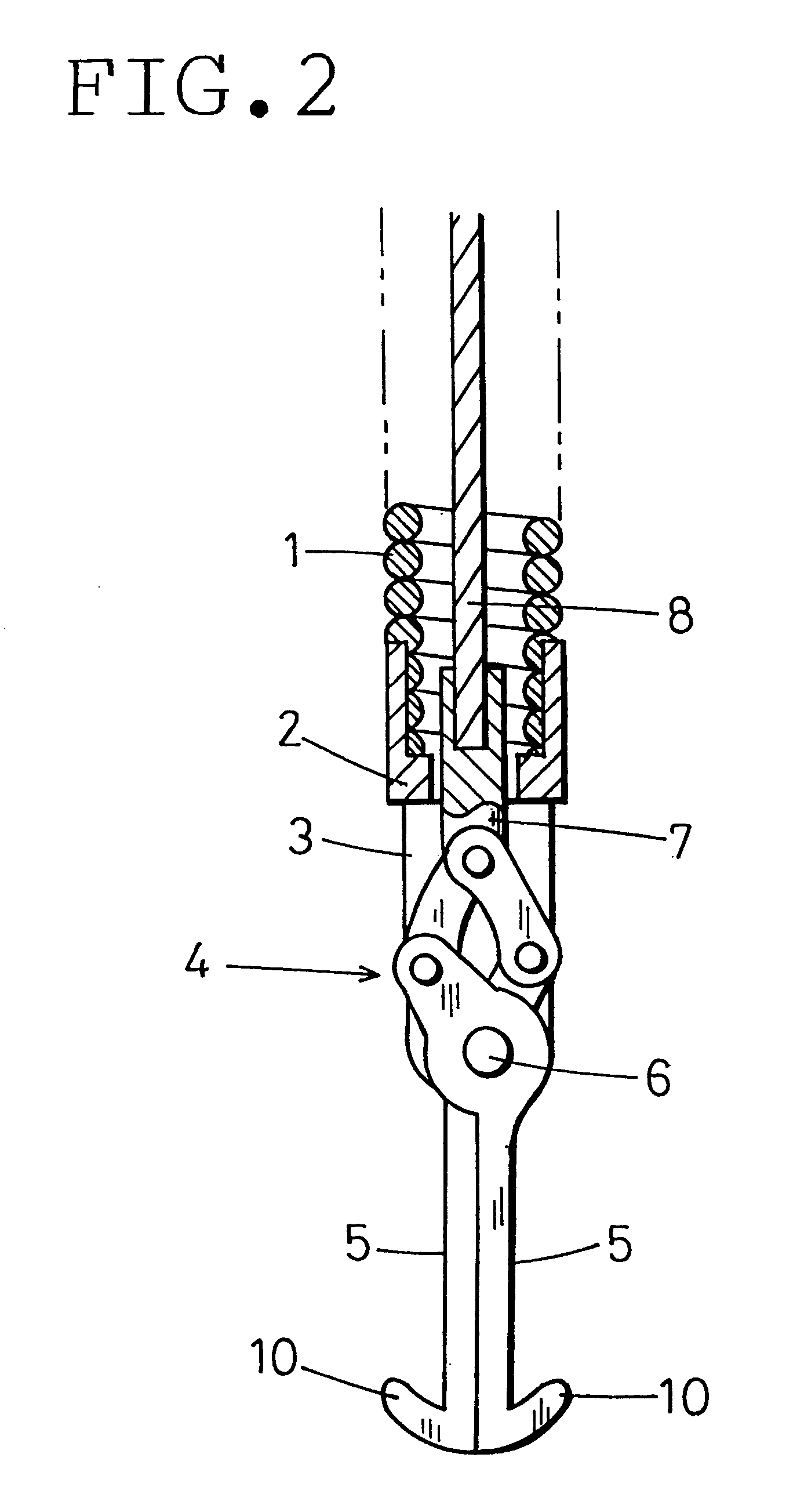Foreign body-recovering instrument for endoscope
- Summary
- Abstract
- Description
- Claims
- Application Information
AI Technical Summary
Problems solved by technology
Method used
Image
Examples
first embodiment
FIGS. 1 and 2 show a distal end portion of a foreign body-recovering instrument for an endoscope according to the present invention. A flexible sheath 1 is removably inserted into an instrument-inserting channel of an endoscope (not shown). A coil pipe is used as the sheath 1. The coil pipe is formed by close-winding a stainless steel wire with a uniform diameter. The sheath 1 has a diameter of the order of from 1.5 millimeters to 2 millimeters and a length of the order of from 1.5 meters to 2 meters.
A support frame 2 is rigidly secured to the distal end of the sheath 1. The support frame 2 is provided with a slit 3. A pantograph-shaped link mechanism 4 is placed in the slit 3. A pair of foreign body-catching arms 5 are connected to the link mechanism 4. The foreign body-catching arms 5 are rotatably supported by a pivot shaft 6 in the vicinity of the distal end of the support frame 2. The foreign body-catching arms 5 project forward.
A wire-connecting shaft 7 is connected to the rea...
third embodiment
FIGS. 5 and 6 show a distal end portion of a foreign body-recovering instrument for an endoscope according to the present invention. FIG. 5 shows a state where the distal end portion of the foreign body-recovering instrument is open. FIG. 6 shows a state where the distal end portion of the foreign body-recovering instrument is closed. In this embodiment, a flexible tube, e.g. a tetrafluoroethylene resin tube, is used as the sheath 1.
Four foreign body-catching arms 5 are provided at intervals of about 90 degrees as viewed from the front side (from the bottom of the figures). Each foreign body-catching arm 5 is formed from a resilient stainless steel wire or the like that is smoothly curved so as to expand outward.
It should be noted that the number of foreign body-catching arms 5 is not necessarily limited to four. For example, three foreign body-catching arms 5 may be disposed at intervals of about 120 degrees. Alternatively, two foreign body-catching arms 5 may be spaced at an angle...
fourth embodiment
FIGS. 7 and 8 show a distal end portion of a foreign body-recovering instrument for an endoscope according to the present invention. FIG. 7 shows a state where the distal end portion of the foreign body-recovering instrument is open. FIG. 8 shows a state where the distal end portion of the foreign body-recovering instrument is closed. In this embodiment, foreign body-catching arms 5 are each formed from a resilient wire. The distal end of each foreign body-catching arm 5 is bent outward at approximately right angles to form a hook-shaped engaging portion 10.
As shown in FIG. 7, the distal end half of the intermediate portion of each foreign body-catching arm 5 is bent to deflect slightly inward so that the distal end of the hook-shaped engaging portion 10 lies inside the extension A of the outer wall surface of the foreign body-catching arm 5.
Consequently, as shown in FIG. 8, the foreign body-catching arms 5 can be withdrawn into the sheath 1 completely so that the engaging portions ...
PUM
 Login to View More
Login to View More Abstract
Description
Claims
Application Information
 Login to View More
Login to View More - Generate Ideas
- Intellectual Property
- Life Sciences
- Materials
- Tech Scout
- Unparalleled Data Quality
- Higher Quality Content
- 60% Fewer Hallucinations
Browse by: Latest US Patents, China's latest patents, Technical Efficacy Thesaurus, Application Domain, Technology Topic, Popular Technical Reports.
© 2025 PatSnap. All rights reserved.Legal|Privacy policy|Modern Slavery Act Transparency Statement|Sitemap|About US| Contact US: help@patsnap.com



